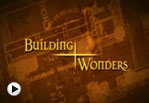The New Cut 2
Temple Meads to Prince St Bridge
View large map image | View before and after photos | View the complete trail as a PDF
From the bottom of the approach road ramp at Temple Meads station turn left to Bath Road Bridge. Don’t cross the bridge!
69. When the New Cut was constructed, two new highway bridges were installed, one here (Hill’s Bridge) and another at Bedminster (Harford’s). Both were cast iron and supplied by the Coalbrookdale Company. In 1855 the coal barge John collided with Hill’s Bridge, resulting in its collapse and the death of two people. The present bridge was built in the 1880s and another was built alongside to double its capacity in the 1960s.
70. From the bridge, looking east, you can see the major railway bridge that carries all the southbound traffic of Bristol’s busy railway system. This bridge was reconstructed in the 1930s as part of a government work creation programme that saw massive expansion of Temple Meads railway station. Several of the new platforms are carried on the bridge. Cross the road at the crossings keeping the water on your left and head along Clarence Road.
 71. Langton Street footbridge was installed here in 1883. It was used first as a temporary bridge at Bedminster whilst a new one was built. Then two barges were brought underneath it and, as the tide in the New Cut rose, these lifted it clear of its base. The barges were then towed upstream and repositioned so that the bridge settled into its new position as the tide ebbed. Cross the bridge and turn right along York Road. (Note: there are steps on the bridge. The alternative flat route is along Clarence Road to the Bedminster roundabout.)
71. Langton Street footbridge was installed here in 1883. It was used first as a temporary bridge at Bedminster whilst a new one was built. Then two barges were brought underneath it and, as the tide in the New Cut rose, these lifted it clear of its base. The barges were then towed upstream and repositioned so that the bridge settled into its new position as the tide ebbed. Cross the bridge and turn right along York Road. (Note: there are steps on the bridge. The alternative flat route is along Clarence Road to the Bedminster roundabout.)
72. The Victorian buildings along York Road are remarkable survivals in one of Bristol’s longest-running conservation battles. Originally blighted by 1960s planning proposals to drive a new major road through the industrial areas of Bedminster, the houses were reprieved but remained derelict until the 1990s. Their survival creates a pleasant backdrop for the New Cut; compare them with the 1950s and 60s council developments on the other bank. At Bedminster roundabout cross to the far side leading to Coronation Road, and then cross the Cut and turn left into Commercial Road.
73. Bedminster Bridge dates from 1883. It replaced the cast-iron Harford’s Bridge that had been built to carry the Bedminster road over the Cut in 1809. It was doubled with a concrete bridge in the 1960s. Continue to the end of Commercial Road.
74. The fixed swing bridge at the end of Commercial Road spans the former lock entrance into Bathurst Basin. This lock enabled smaller craft to bypass the Cumberland Basin system and enter or leave the Harbour nearer to their likely berths. It was blocked at the beginning of the Second World War to stop the Harbour draining if the lock was hit by bombing. The lock was permanently sealed in the 1952. At the roundabout, you can turn right to reach Prince Street Bridge, or you can continue the New Cut walk from 34.







